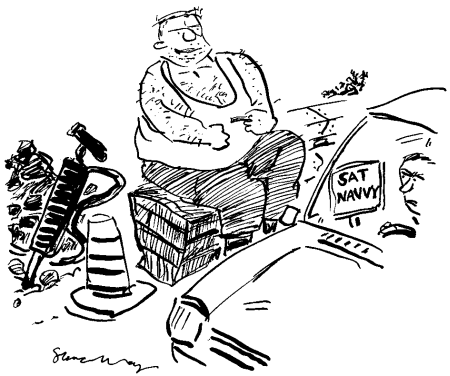The Slade of the years immediately before the first world war has always been fertile ground for novelists. As Sarah MacDougall pointed out in her engaging biography of Mark Gertler, Gertler himself and his fellow students have provided copy for anyone and everyone from D.H. Lawrence and Virginia Woolf to Katherine Mansfield, V.S. Pritchett and the woefully untalented and finally mad Gilbert Cannan.
Given her previous record, it was probably only a matter of time before Pat Barker joined this list, and Life Class opens in the familiar world of Henry Tonks’s Slade. ‘Is that really the best you can do?’ the formidable Tonks demands, as he critically examines the most recent effort at life drawing by Paul Tarrant, Pat Barker’s protagonist. ‘Then why do it?’
It is a question horribly faithful of the historical Tonks — and the very words he used in fact to Gertler — and typical of an institution Paul Nash labelled an ‘English public school seen in a nightmare’, but it is a question that Pat Barker’s fictional Paul is unable to answer. Born in Middlesbrough of a working-class family and subsidised by a rapacious rackrent grandmother, Paul finds himself as unsure of his artistic talent as of his social position in the Café Royal of Augustus John, or of the drawing room of Ottoline Morrell.
‘Art! It’s not for people like us…’ Paul hears his grandmother telling him, but, in a callow attempt to bridge the gap between ‘people like us’ and this alien world, he embarks on a vividly realised affair with Teresa, a life-class model at the Slade. Beaten up by her violent husband, Paul is patched up by his fellow student Elinor who proceeds to play him off in a triangular relationship with Kit Neville, a successful older artist, modelled partly on Christopher Nevinson. This new friendship only intensifies Paul’s insecurities. Whereas in his art Paul has nothing to say, Kit seems the embodiment of their times, a natural Futurist embracing the machine age and the dynamism of industrial life with an artistic integrity Paul can only admire and a popular success he can only envy.
Fairground, lush English countryside, house parties, Café Royal — the sweltering summer of 1914 shuffles past like slides in a carousel of prewar paintings — but with the outbreak of war Pat Barker returns to the ‘creosote, bleach, disinfectant, soil, blood, gangrene’ world she has already made her own. Anxious to play his part in the coming war, Paul volunteers as a hospital orderly and is posted to Ypres, a pretty market town still two miles from the Front, hovering somewhere between its prewar mundanity and the mythological status it would soon acquire.
Pat Barker is, as one would expect, immensely convincing in the physical realisation of this world, but it is Paul’s emotional landscape that is her real interest. Cauterised by the experience of this real-life class, he oddly finds his artistic talent blossoming as his human sympathies wither, achieving in painting of a feverish intensity and power that astonishes even him the artistic voice that had eluded him as a student in Tonks’s life class.
There is so much that is good in all this, in the sharp detail of hospital and clearing-station life, in the surreal coexistence of everyday life with the mesmerising psychological horror of war, that it is curious to find in the end that the novel is in some way unsatisfactory. The problem is a weakness of characterisation that is caused in the main by the blurring of fact and fiction. The triumph of Regeneration was the solid reality of Craiglockhart, the vivid portrayals of Rivers, Sassoon and Owen set in a fictional construction where the real and the invented reinforced each other to create an extraordinarily powerful novel.
Life Class, for all its successes, does not do the same. There are walk-on parts by real figures — Tonks, Augustus John, Ottoline Morrell — but Paul (Gertler), Elinor (Carrington) and Kit (Nevinson) are hybrids that ultimately convince neither as invention nor as history. It is a parlous business to pick and choose from the experience and reactions of a real group of people in search of fictional purposes of one’s own. A novel, of course, demands to be judged on its own terms, but in so openly acknowledging her sources Pat Barker risks sending her readers back to biographies — not to mention the art — that suggest quite different and more coherent imperatives and motivations.






Comments